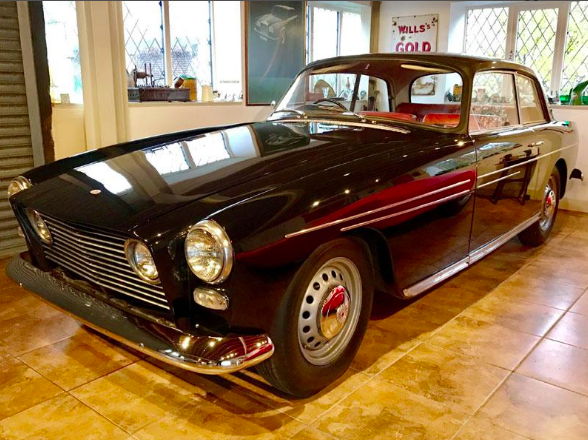-
Insurance
InsuranceAbout our productsLearn about insuringGet a quote Get current values, historical values, model history and more.
-
Valuation
ValuationHagerty valuation toolLook up a vehicle value Get current values, historical values, model history and more.
-
Events
EventsHagerty official eventsHagerty ClubhouseEvent calendar
-
Entertainment
EntertainmentMore to explore
- Portal login
1966 Bristol 408
Base 2dr Saloon 5.1 L
Vehicle values by condition
Fair
Condition 4
£19,000
#4 cars are daily drivers, with flaws visible to the naked eye. The chrome might have pitting or scratches, the windshield might be chipped.
Good
Condition 3
£34,100
#3 cars could possess some, but not all of the issues of a #4 car, but they will be balanced by other factors such as a fresh paint job or a new, correct interior.
Excellent
Condition 2
£46,700
#2 cars could win a local or regional show. They can be former #1 cars that have been driven or have aged. Seasoned observers will have to look closely for flaws.
Concours
Condition 1
£69,900
#1 vehicles are the best in the world. The visual image is of the best car, unmodified, in the right colours, driving onto the lawn at the finest concours.
Insurance premium for a
1966 Bristol 408 Base 2dr Saloon 5130
valued at £34,100
£212.54
/ year*
History of the 1963 - 1966 Bristol 408

1963 - 1966 Bristol 408
The Bristol 408 is a five-seater saloon produced from 1963 to 1966.
As with its 407 predecessor, the Bristol 408 was powered by a 5.1-litre OHV V-8 engine, with disc brakes on all four wheels, independent front coil springs, a transverse Watt’s linkage on the rear live axle and cam-and-roller steering. The steel-framed alloy body gained new frontal treatment with a rectangular grille containing the auxiliary lamps.
The Bristol 408 was launched in October 1963 and aside from the radiator grille the chief visual difference as compared with the Bristol 407 were twin chrome strips and a slightly lower roofline that reduced the overall height by one inch. The new frontal treatment made the 408 look longer than the older car, although it was four inches shorter; albeit with the same wheelbase. Inside, the fascia now sported a control for Armstrong ‘Selectaride’ adjustable rear dampers and the ventilation system was also improved. Bristol claimed that the 408 was ‘One of the world's few cars of obvious distinction’ and the price was certainly exclusive; £4,459. The Bristol 408’s top speed was 122 mph with 0-60 in 9.9 seconds. The taillights were shared with the Hillman Super Minx although few 408 owners would have thanked you for pointing this out.
Bristol introduced a Mk.2 version of the 408 in 1965, which was fitted with an improved alloy automatic gearbox in place of the steel unit and a 5.2-litre V-8 engine. The gearbox was also now fitted with a safety lever to prevent the button for ‘Park’ being inadvertently pressed.
Bristol ended 408 production in September 1966 when it was replaced by the 409 that had been launched in the previous year.
The engine for the 408 Mk.1 was a Chrysler-sourced 5,130cc V-8 and the Mk.2 was powered by a 5,211cc V-8 unit. Both models were fitted with the 3-speed Torqueflite transmission.
Perhaps the Bristol 408 is best regarded as a subtle refinement of the template established by the 407; with the engine and the transmission especially well matched and an almost total absence of wind noise.
The challenges facing a 408 buyer include possible corrosion of the chassis outriggers, wheel arches and rear suspension mounting points, plus the potential (vast) costs involved in possible resprays and interior refurbishment.
After more than 50 years, the Bristol 408 remains the ideal transport to convey a quartet of industrial magnates or off-duty diplomats to their next meeting with speed but never undue haste.
The rivals for the 408 included the Aston Martin DB5, the Bentley S3 Continental, the Facel Vega ‘Facel II’, the Gordon-Keeble and the Jensen CV8.
Hagerty Newsletter
Get your weekly dose of car news from Hagerty UK in your inbox

ADVERTISEMENT